Everyone since childhood is familiar with candy Barbaris and carbonated water with a taste of Barbaris. But, probably, not everyone knows about the existence of an interesting plant called Barbaris. Such an instance can be the main decoration of your site, as, depending on the variety, Barbaris is of different bright colors. And this feature of the plant will not miss any landscape designer and the owner of the site. In this article, we will consider in more detail all the main features of Barbaris Tunberg, characterize popular varieties and learn about the nuances of the agrotechnology of this plant.
Features and description of Barbaris Tunberg
Barbaris Tunberg is a representative of the Barberry family, which there are about 170 species. This species is one of the most popular, as it represents decorative value due to the color of foliage, colors and fruits. The birthplace of Barbaris Tunberg is China and Tibet, therefore the usual habitat area of \u200b\u200bsuch plants mountainous terrain and gentle slopes.
In Russia, such a unique decorative plant became known only in the 19th century and immediately got much popularity. To date, no land or garden can do without this plant. Barbaris looks great in single landings or in alive hedges. Alternatively, it can be planted on the alpine slide.
Description Barbaris Tunberg:
- Barbaris Tunberg refers to leafy shrubs. However, it can easily achieve a height of a small tree.
- Height can grow up to 1.5 meters. He is a low representative of the barberry family.
- However, the diameter of the crown may exceed the growth of the plant. On average, reaches 2-3 meters.
- Barbaris Tunberg is growing with a shrub, a large number of argue shoots appear from one base.
- Krone him may have a shape of a ball or be oblong, it all depends on the specific grade of Tunberg.
- Barbaris Tunberg is a flowering shrub. Starts bloom from late May. Flowers have a yellow color and are reminded in the form of marine sinks. Most likely because of this similarity of the Arabs, the plant "Berbry" was called, translated from the Arab "Sink".
- The biggest value of Barbaris Tunberg is the foliage.
- The leaves have an oblong diamond shape and small sizes, they are matte with a glossy surface, bright green.
- The leaves of Barbaris Tunberg are unique with a constant shift of the color: the autumn instead of green leaves appear yellow and red, purple and pink.
- Fruits appear by the end of the season. In shape they are obliged, are inedible due to the obvious bitterness. However, apply as spices in cooking.
- The plant itself is a long-liver, grows up to 50 years.
- Barbaris Tunberg has dwarf plants and giants plants.
- It is an excellent decoration of the site. Used to create live elevations.
Photo gallery Barbaris Tunberg
Use in alive hedge:
Basic varieties of Barbaris Tunberg
Barbaris Tunberg has a lot of varieties and shapes that differ in the color of foliage and high.
Conditionally, all varieties of this type of barbaris can be divided into groups depending on the color of foliage. Barbaris Green is isolated (green foliage), Barbaris Tunberg Golden (leaves with golden border), Barbaris Rad (Red and purple foliage), Barbaris Tunberg Orange (foliage changes painting with yellow to bright orange).
Let us consider more than consider especially the bright representatives of this type of Barbaris.
Barbaris Tunberg Atropurpur
One of the most popular varieties. It can reach a height of 2 meters, exactly the same can be the diameter of the crown, which allows the plant to be placed any form. The leaves of this variety of purple-red color, by autumn partially change the color to yellow, in the form of oblong and small. Fruits of red. Such a grade grows well in the shade and in the sun.
Barbaris Tunberg Nana Atropurpur
This variety belongs to the dwarf forms, which are considered the most valuable. They are perfectly suitable for decorating alpine slides and various flower beds. Barbaris Nana grows only 0.6 m, the maximum height of up to 90 cm. The leaves have a bright purple-red color, in the fall, the color becomes a little burnt. The fruits of this form are also red.
Barbaris Tunberg Aurea
Also is a low shrub. Great grows in the middle lane of Russia. The crown of this variety has a shape of a ball, so it is perfectly pruning. On shoots grow small spikes. Aurea leaves of bright yellow with a transition to orange. Thanks to such a bright colors, it looks great on the plot. Begins to bloom this variety in May, the flowers are small than yellow-red. The fruits have a bright red color, which is perfectly harmonized with golden foliage.
Barbaris Tunberg Maria
Pretty popular variety. It reaches a height of 1.2 meters and has a vertical colonum crown form. Leaves of pretty large sizes of bright yellow with reddish border. In the fall, they become orange or even tangerine. The spikes that are very strong are growing on shoots. Light loves light, therefore, planted in the shade, can stop growing.
Barbaris Tunberg Erecta
The crown of this variety has a colonum shape, shoots grow vertically up. The foliage of this variety is rich in green, it becomes reddish in the fall. Very unpretentious and frost-resistant variety. Height can grow up to 1 meter.
Barbaris Tunberg Golden Ring
Excellent decorative grade, perfectly suitable for garden decoration and flower garden. Leaves have a bright purple color with a yellow border along the edge. It refers to high plants of this species, height can reach 3 meters. Therefore, it looks great in single landings and in the living hedge.
Barbaris Tunberg Orange Rocket
Very unusual and bright representative of this species. His foliage has a double color, which makes it a major plant on the plot. The young shoots of this plant and the leaves have a bright orange color, and already ridiculous possess the beet color.
Barbaris Tunberg Admiirshn
This variety Barbaris has been derived relatively recently and it refers to dwarf forms, for which it is appreciated. Leaves of his bright red-orange color with lemon border. Such a variety is perfect for creating alpine slides and rocaries, as well as to plant borders.
From frequently used varieties, you can still celebrate Green Carpet, Green Ornament, Tunberg Kobold and others.
Preparatory work before landing Barbaris Tunberg
To get a healthy and beautiful plant, it is necessary to carefully prepare before landing Barbaris Tunberg. Be sure to choose the right seedlings without damage, pick up a suitable place and prepare fertile soil.
Selection and preparation of seedlings
Most often landmark Saplings of Barbaris at a permanent place in the spring, when the Earth began to drain and before the appearance of the kidneys on the trees. But you can sit in the fall during the leaf fall.
- Be sure to buy seedlings from proven gardeners or in professional nurseries. So you will be confident in the purchased landing material.
- Pay attention to the root system. It is better to buy seedlings with closed roots, i.e. When roots are hidden in the earthen com or planted in the container. Saplings with an open root system should urgently plant in the ground so that the plant does not die.
- Neither roots nor shoots should be damaged.
- Before boarding, moisten the roots with water if they dried a little. If you have purchased seedlings in a container, get it.
Choosing a place to land Barbaris Tunberg
When landing Barbaris Tunberg does not need to look for some particularly fertile soils. This plant is not addictive. The main requirement to the place of landing of the shrub is the lack of close grounding of the groundwater and the presence of a good drainage. With an excess of moisture, Barbaris may die.
Barbaris foliage painting directly depends on its location. Therefore, to obtain a bright and colorful plant, it is necessary to choose a well-lit place with a large number of sunlight. However, it should be borne in mind that many varieties of Barbaris Tunberg do not like the presence of wind gusts. Such plants need protection.
When choosing a place, consider the future role of Barbaris in the design of your site. They are great for creating a living hedge, as well as for making alpinarias and rocaries. In this case, choose a grade of foliage color so that Barberry has harmonized with a general composition.
Soil preparation before landing
Optimal for barbaris are neutral or weakly acidic soils, since in nature this plant grows in the mountains and on the slopes. Also watch the soil be easy and missed moisture. It is not desirable to the presence of clay soil, as it can hold moisture, which is detrimental to Barbaris.
If the soil is heavy, you can independently prepare a special mixture, which consists of a delicate earth, humid and sand.
The process of landing Barbaris Tunberg
If you have decided on the landing site of Barbaris and acquired the seedlings of the variety you need, you can start planting the plant:
- If you are going to plant a barbaris as a living hedge, it is most convenient to dig a trench, where two plants are planted for 1 meter. Trench depth must be 35-40 cm.
- For a single landing, pits 50 by 50 cm with dimensions.
- Since Barbaris does not like water stagnation, it is necessary to create a layer of drainage. As it, you can use broken brick, gravel or small stones.
- We prepare the soil mixture for planting: turf, peat and sand. You can add 200 grams of wood ash if the earth is sour.
- Get out of the container a seedling, we remove the extra earth a little and put the plant into the prepared pit.
- Next, we sprinkle the earth, follow the root cervix to be slightly above the ground surface.
- Gently tamper with your hands.
- After landing, it is necessary to abundantly pour shrub.
- The last stage in the planting process is mulching, which will protect the plants from evaporation of moisture and will not give rise to weeds. As a mulch, you can use sawdust, bark or humus.
Features of the care of Barbaris Tunberg
After landing, like any other plant, Barbaris needs to be care. Barbaris Care Tunberg includes the following actions: watering, soil looser and mulching, feeding and crown formation. Read more consider each stage.
Watering Barbarisa
Since Barbaris Tunberg does not like abundant moisture, it is quite natural precipitation. The frequency of irrigation is reduced to one time a week. It is absolutely necessary to water it only in a period of arid weather. In this case, you can pour a plant, but only necessarily warm water. And you need to water the root.
Loosening and mulching
The root system of Barbaris needs a constant influx of oxygen, therefore, frequent weeds and soil loans are very useful to this plant. To reduce the frequency of these procedures, you can apply mulching, as the use of peat, humidiation, sawdust is recommended.
Undercaming Barbarisa
The young plant needs to feed only the next spring, a year after landing. The optimal is the feeder with nitrogen content. A solution of urea and water can be used as it. The next application of fertilizers is carried out only in three years. It is useful to introduce complex fertilizers with the content of trace elements.
Trimming Barbarisa
Sanitary trim includes the removal of damaged shoots, as well as broken and weak. For such trimming, it is necessary to wait for the appearance of foliage so that the damage is clearly visible. You can also break the branches of an adult plant.
If you planted a live fence, the formation of the crown is carried out during the year, namely in June and August. Dwarf varieties do not need trimming.
Fighting diseases and pests
Basic pests:
- Aphid. Sign of the appearance of this pest - the leaves on the shrub begin to dying. To make sure of it - look at the opposite side of the sheet, it is her favorite place. To combat it, you can use folk remedies, such as a soap solution or tobacco.
- Flower spine. This is another pest, but, unlike the Tly, the Pyadenitsa harms the fruits of Barbaris. Decis is used to combat it.
Barbaris Diseases:
- Puffy dew. From this fungal disease, Barbaris suffers very much. With this disease, the leaves and shoots of the shrub are covered with a white bloom. For treatment it is necessary to use a sulfur-lime mixture. All damaged shoots need to cut and burn.
- Barberry leaf spottedness is caused by fungi, when they appear on the leaves, spots are formed. Because of this, all the plant weakens and can be moderated in winter. Copper is used for treatment.
- Barberry shoots drying is caused by fungi. When they appear, the shrub falls the leaves and dried shoot. Be sure to cut contaminated branches.
Barbaris Tunberg reproduction
The reproduction of Barbaris Tunberg is carried out in several ways: seeds, tanks, cuttings and the division of the bush.
- Seeds. With this method, you must select ripe fruits, separate the seeds from the pulp and dry all the bones. You can also for disinfection to be treated with a solution of manganese. Sold seeds must be in the fall in small pots. You can replant with a permanent place in a year when the seedlings are fixed enough.
- Digging. For this method of reproduction choose the strongest and healthy plants. Then you find young annual shoots and bend them in a specially digged trench depth of 15-20 cm. It is necessary to sprinkle the earth, leaving only the top.
- Cuttings. The cuttings must be cut and rooted in a greenhouse or in specially created conditions. Periodically, you need to water and ventilate the greenhouse. Also important actions for rooting cuttings are constant hardening and loosening.
- Decision bush. For this method, reproduction should be chosen a strong and healthy plant, dig it and divide into two halves. At the same time, watch the roots are not damaged.
Barbaris is a beautiful and bright plant that will benefitly look in the living hedges and in single landings, decorating and making your unique plot.

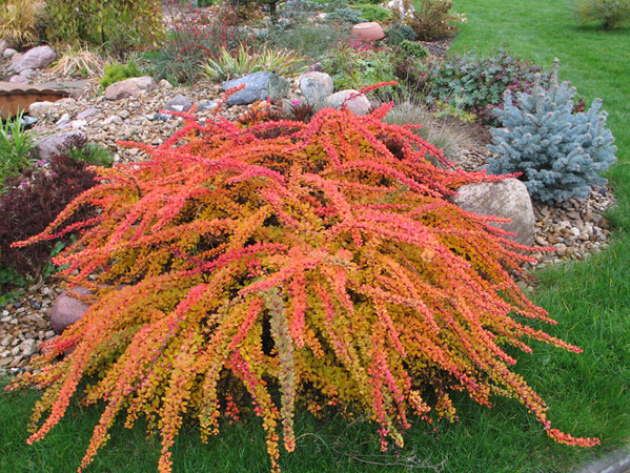
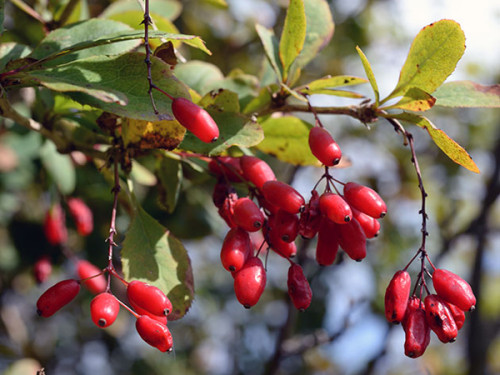

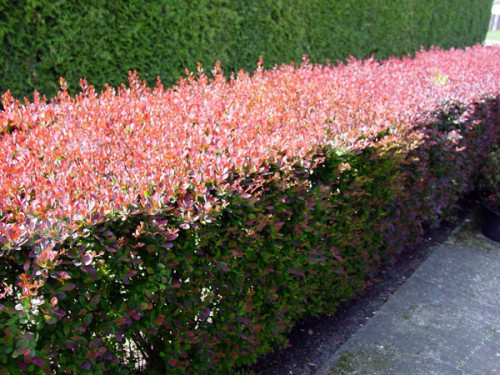

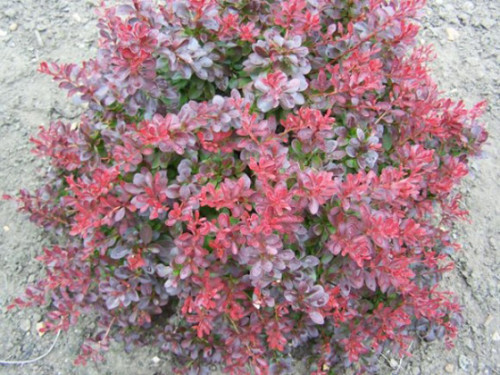
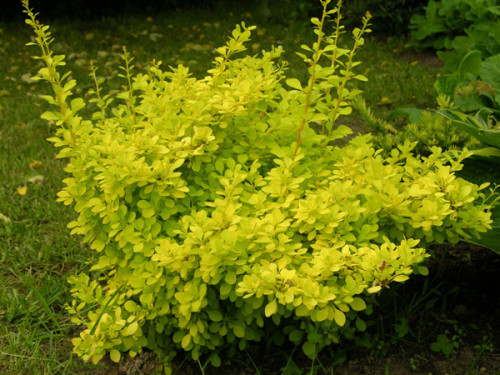
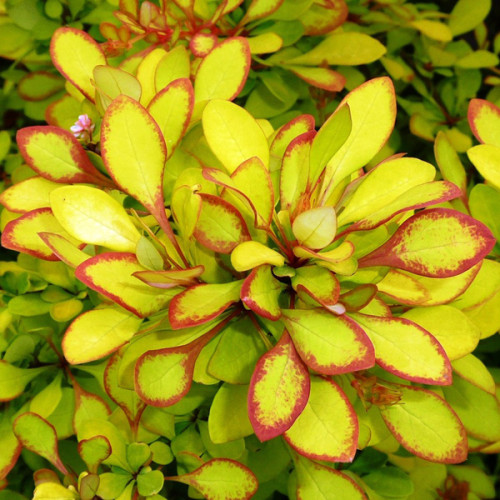
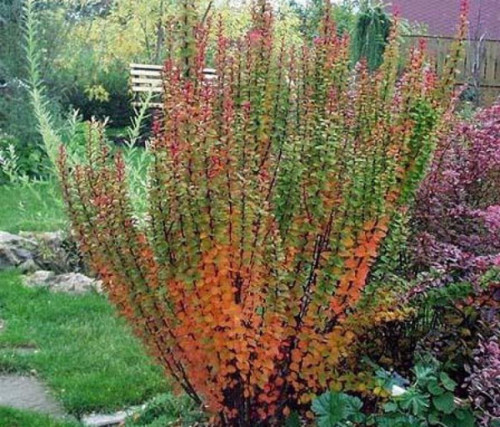
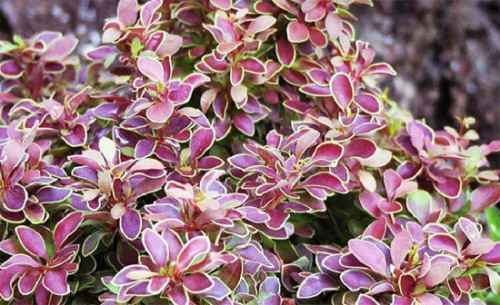
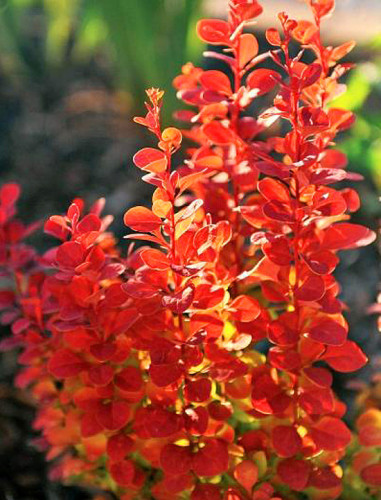
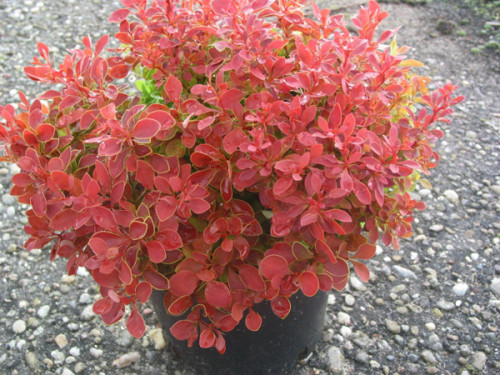
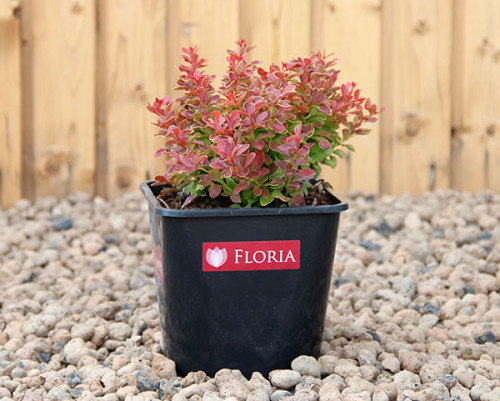












 Start a discussion ...
Start a discussion ...